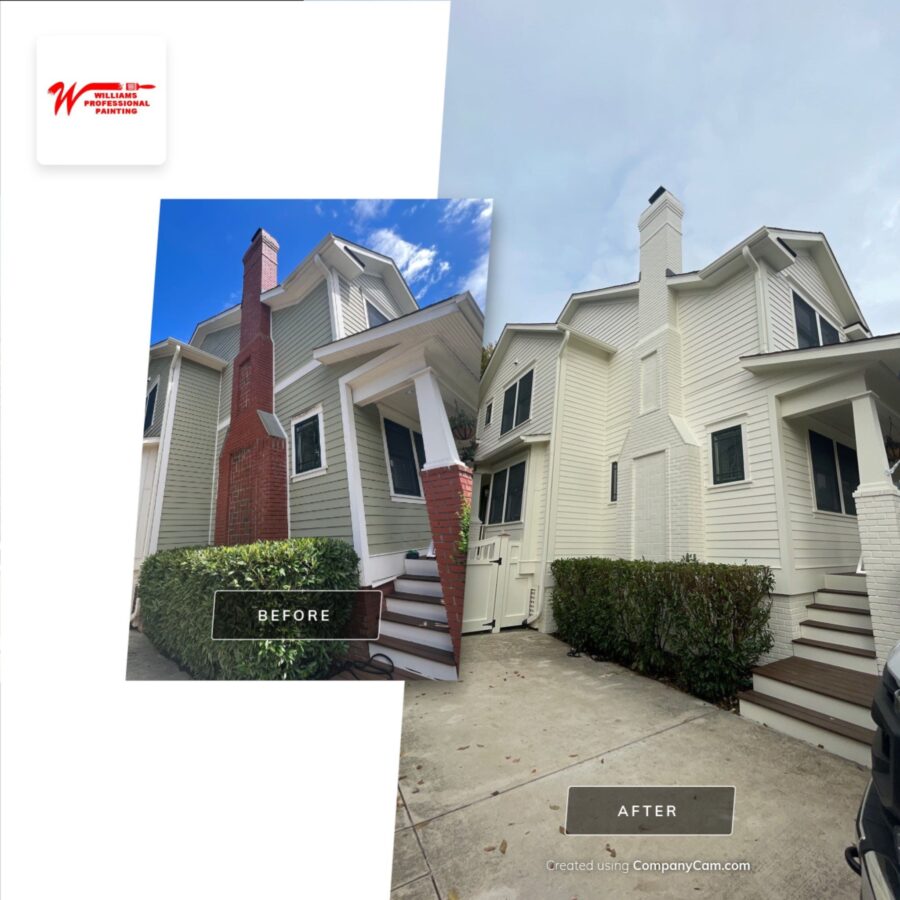Is Surface Preparation Important for Exterior Painting?

There’s a lot to consider when you’re getting ready for an exterior repaint. Colors, types of paint, estimates, budget, and the list goes on…
As you weigh your options and make your plan, be sure you keep a clear focus on surface preparation. We’re not exaggerating when we say that it can make or break your exterior repaint. So, if you’re tackling a project yourself, make sure you’re well versed in all the steps that need to happen before a single paint can is opened. And if you’re hiring a professional exterior painter, make sure you find one that will do the job right; no cut corners, and no fuzzy details.
Here’s what you need to know.
The Real Deal About Surface Preparation
Imagine you're an artist. Your canvas needs to be clean, smooth, and primed before your masterpiece takes shape, right? You’d never paint on a dirty, greasy backdrop..
Similarly, for a great paint job, you need a well-prepped surface. If the substrate is dirty, flaky, or rotten, the new paint won’t adhere properly, leading to unsightly blisters, peeling, or premature cracking. Not quite the picture-perfect house you imagined, right?
Yes, preparation takes time, but it's not time wasted. It’s an investment. A well-prepared surface helps your paint job last longer, saving you repaint costs and potential headaches down the line.

Surface Preparation: Step by Step
Now that we're on the same page about its importance, what exactly does surface preparation involve? Here's a step-by-step breakdown:
Cleaning: This step involves a serious deep-clean. We're talking about power washing to remove all the accumulated dirt, dust, grime, and loose paint. It's all about giving your new paint a clean slate to cling to.
Repair Work: Post-cleaning, the surface needs a thorough examination for any signs of damage. This might involve replacing rotten wood, filling in holes, or sealing cracks. After all, a smooth, undamaged surface is key to a flawless finish.
Sanding and Scraping: After any necessary repairs, it's time to sand and scrape the surface. This process ensures a smooth, even surface that’s ready to soak up your new paint.
Priming: Last but certainly not least, it's priming time. A primer acts as an intermediary layer that helps your paint adhere better and last longer. It can really take your paint job from good to great.
DIY or Pro? Weighing the Options
It might be tempting to grab a brush and a can of paint and go the DIY route with surface prep. But remember, exterior painting isn't a piece of cake. It often means working at heights, dealing with power washing equipment, and investing a lot of elbow grease. Professional painters have the skills, experience, and equipment to handle the task efficiently and safely. When you let the pros handle it, you can kick back, relax, and look forward to a stunning result.
Your Takeaway
So, is surface preparation important for exterior painting? Absolutely! It’s the foundation of a successful paint job. It ensures your new paint sticks well, looks awesome, and withstands the test of time. And although it may seem like a chore now, it's worth every minute in the long run.
FAQs
Q: Can I paint directly on old paint?
A: In some cases, you can. But it depends on the condition (and type) of the old paint. If it's peeling or flaky, you'll need to remove it before starting the new paint job.
Q: How long does surface preparation take?
A: It can vary depending on the size of your home and the condition of the existing exterior. A professional painting team can provide a time estimate after assessing your property.
Q: What happens if I skip surface preparation?
A: Shortcuts are rarely a good idea in home improvement. If you skip the prep, you risk running into problems like peeling, cracking, or bubbling paint. You might also end up with a paint job that doesn't last very long.
Q: Will the surface preparation process damage my plants or yard?
A: Professional painters are typically mindful of your property and will take precautions to protect your plants and yard during the surface preparation process.
Q: Is primer always necessary?
A: Primer isn't always mandatory, but it's usually a good idea, especially when you're making a dramatic color change, painting over bare wood, or dealing with stained or repaired surfaces. A primer helps the paint adhere better and provides a more even color outcome.
Q: How can I be sure the professionals are prepping the surface correctly?
A: Communication is key. Reliable professionals will walk you through their process and address any concerns you may have. Don't hesitate to ask questions – this is your home, and you deserve to know how it's being cared for!
Have more questions about house painting? Contact us at Williams Professional Painting! It would be our pleasure to serve you and your home.

